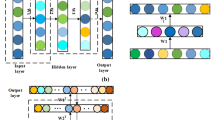Abstract
Interest on anomaly detection for hyperspectral images has increasingly grown during the last decades due to the diversity of applications that benefit from this technique. However, the high computational cost inherent to this detection procedure seriously limits its processing efficiency, especially for onboard application scenarios. In this paper, a novel spectral and spatial approximate computing approach, named SSAC is proposed for onboard anomaly detection from hyperspectral images. To efficiently design the proposed approach, two preliminary aspects have been deeply analyzed in this work. First, data correlation in hyperspectral images in both spectral and spatial dimensions has been analyzed. The high data correlation in both spectral and spatial dimensions is considered to be one of the cornerstones of the SSAC approach. Second, the error resilience of a popular hyperspectral anomaly detection algorithm in both data level and algorithm level has been analyzed, which is considered to be another cornerstone of the SSAC approach. Based on the outcomes of this analysis, the processing of spectrally and spatially degraded images has been employed for reducing computation complexity in onboard hyperspectral anomaly detection scenarios in this work. Performance assessment tools such as ROC curves, Cost curves, and computing times have been used for evaluating the computing accuracy and efficiency of our proposal. The results obtained with a nonlinear anomaly detector for hyperspectral imagery, such as the well-known kernel RX-algorithm, show that the proposed SSAC approach greatly improves anomaly detection efficiency compared to the traditional method with negligible degeneration in accuracy. This is an important achievement to meet the restrictions of onboard hyperspectral anomaly detection scenarios.











Similar content being viewed by others
References
Chang Chein, I., Chiang, S.S.: Anomaly detection and classification for hyperspectral imagery. IEEE Trans. Geosci. Remote Sens. 40, 1314–1325 (2002). https://doi.org/10.1109/TGRS.2002.800280
Stein, D.W.J., Beaven, S.G., Hoff, L.E., Winter, E.M.: Anomaly detection from hyperspectral imagery. IEEE Signal Process. Mag. 19, 58–69 (2002). https://doi.org/10.1109/79.974730
Salem M.B., Ettabaa K.S., Hamdi M.A.: Anomaly detection in hyperspectral imagery: an overview. Image Processing, Applications and Systems Conference. Sfax, pp. 105–13 (5–7 Nov 2014)
Chang, C.I., Jiao, X., Wu, C.C., Du, Y., Chang, M.L.: A review of unsupervised spectral target analysis for hyperspectral imagery. EURASIP J. Adv. Signal Process. 2010, 1–26 (2010). https://doi.org/10.1155/2010/503752
Molero, J.M., Garzon, E.M., Garcia, I., Quintana-Orti, E.S.: Efficient implementation of hyperspectral anomaly detection techniques on GPUs and multicore processors. IEEE J. Sel. Topics Appl. Earth Obs. Remote Sens. 7, 2256–2266 (2014). https://doi.org/10.1109/JSTARS.2014.2328614
Wu, Z., Shi, L., Li, J., Wang, Q., Sun, L., Wei, Z., Plaza, J., Plaza, A.: GPU parallel implementation of spatially adaptive hyperspectral image classification. IEEE J. Sel. Topics Appl. Earth Obs. Remote Sens. 1–13 (2017)
Sebastian, L., Tanya, V., Carlos, G., Javier, R.: The promise of reconfigurable computing for hyperspectral imaging onboard systems: a review and trends. Proc. IEEE 101, 698–722 (2013). https://doi.org/10.1109/JPROC.2012.2231391
Cong, L., Gao Lianru, W., Yuanfeng, Z.B., Javier, P., Antonio, P.: A real-time unsupervised background extraction-based target detection method for hyperspectral imagery. J. Real Time Image Proc. 4704, 1–19 (2017)
Xu Yang, W., Zebin, L.J., Antonio, P., Zhihui, W.: Anomaly detection in hyperspectral images based on low-rank and sparse representation. IEEE Trans. Geosci. Remote Sens. 54, 1990–2000 (2016)
Xu Yang, W., Zebin, C.J., Zhihui, W.: Joint reconstruction and anomaly detection from compressive hyperspectral images using Mahalanobis distance-regularized tensor RPCA. IEEE Trans. Geosci. Remote Sens. 56, 1–12 (2017)
Han J., Orshansky M.: Approximate computing: An emerging paradigm for energy-efficient design. In: Test Symposium, 18th IEEE European, vol. 370, pp. 1–6 (2013)
Yuanfeng, W., Xinghua, Y., Antonio, P., Fei, Q., Lianru, G., Bing, Z., Yabo, C.: Approximate computing of remotely sensed data: SVM hyperspectral image classification as a case study. IEEE J. Sel. Topics Appl. Earth Obs. Remote Sens. 9, 5806–5818 (2016). https://doi.org/10.1109/JSTARS.2016.2539282
Bing, Z., Wei, Y., Lianru, G., Dongmei, C.: Real-time target detection in hyperspectral images based on spatial-spectral information extraction. EURASIP J. Adv. Signal Process. 2012, 1–15 (2012). https://doi.org/10.1186/1687-6180-2012-142
María, D., Sebastián, L., Roberto, S.: A new comparison of hyperspectral anomaly detection algorithms for real-time applications. SPIE Remote Sens. 24, 100070D (2016). https://doi.org/10.1186/1687-6180-2012-142
Chris, D., Holte, R.C.: Cost curves: an improved method for visualizing classifier performance. Mach. Learn. 65, 95–130 (2006). https://doi.org/10.1007/s10994-006-8199-5
Reed, I.S., Yu, X.: Adaptive multiple-band CFAR detection of an optical pattern with unknown spectral distribution. IEEE Trans. Acoust. Speech Signal Process. 38, 1760–1770. https://doi.org/10.1109/29.60107
Heesung, K., Nasrabadi, N.M.: Kernel RX-algorithm: a nonlinear anomaly detector for hyperspectral imagery. IEEE Trans. Geosci. Remote Sens. 43, 388–397 (2005). https://doi.org/10.1109/TGRS.2004.841487
Scholkopf, B., Smola, A.J.: Learning with Kernels, vol. 52, no. 8. MIT Press, Cambridge (2002), pp. 2165–2176. https://doi.org/10.1109/TSP.2004.830991
Gao, L., Du, Q., Zhang, B., Yang, W., Wu, Y.: A comparative study on linear regression-based noise estimation for hyperspectral imagery. IEEE J. Sel. Topics Appl. Earth Obs. Remote Sens. 6, 488–498 (2013). https://doi.org/10.1109/JSTARS.2012.2227245
Chippa, V.K., Mohapatra, D., Raghunathan, A., Roy, K., Chakradhar, S.T.: Scalable effort hardware design: exploiting algorithmic resilience for energy efficiency. In: Design Automation Conference, 47th ACM/IEEE, vol. 58, pp. 555-560 (2010). https://doi.org/10.1145/1837274.1837411
Jiang, Y., Cukic, B., Menzies, T.: Cost curve evaluation of fault prediction models. In: International Symposium on Software Reliability Engineering, pp. 197–206 (2008). https://doi.org/10.1109/ISSRE.2008.54
Herweg, J.A., Kerekes, J.P., Weatherbee, O., Messinger, D., van Aardt, J., Ientilucci, E., Ninkov, Z., Faulring, J., Raqueño, N., Meola, J.: SpecTIR hyperspectral airborne Rochester experiment data collection campaign. In: Proceedings of SPIE, The International Society for Optical Engineering, vol. 8390, pp. 197–206 (2012). https://doi.org/10.1117/12.919268
Plaza, A., Du, Q., Chang, Y.L., King, R.L.: High performance computing for hyperspectral remote sensing. IEEE J. Sel. Topics Appl. Earth Obs. Remote Sens. 4, 528–544 (2011). https://doi.org/10.1109/JSTARS.2010.2095495
Acknowledgements
This work was supported by the Natural Science Foundation of China under Grants 91638201 and 41301384, and the National Key Research and Development Program of China under Grant 2016YFB0500304.
Author information
Authors and Affiliations
Corresponding author
Rights and permissions
About this article
Cite this article
Wu, Y., López, S., Zhang, B. et al. Approximate computing for onboard anomaly detection from hyperspectral images. J Real-Time Image Proc 16, 99–114 (2019). https://doi.org/10.1007/s11554-018-0797-5
Received:
Accepted:
Published:
Issue Date:
DOI: https://doi.org/10.1007/s11554-018-0797-5




